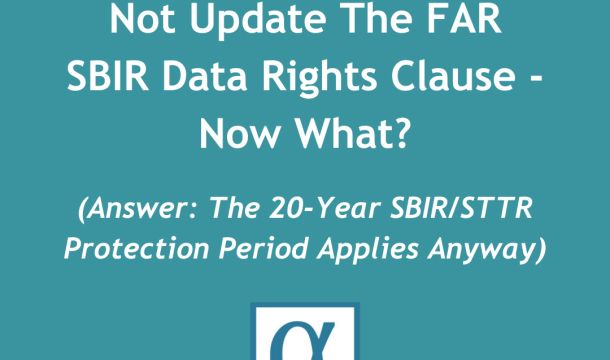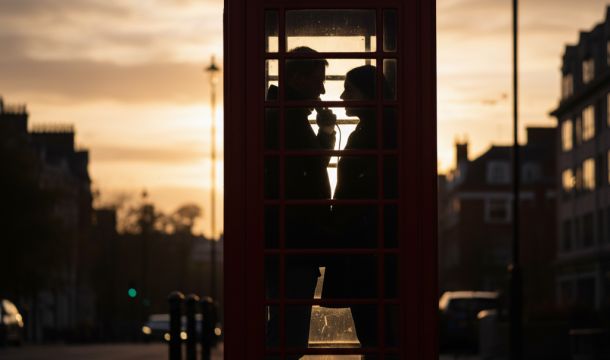The GovCon Bulletin™
Sweeping Final Rule Amends SBA Regulations, Part 2: Limitations on Subcontracting
June 23, 2016
Part 2 of Our Summary of SBA's Sweeping Amendments To Its Regulations!
On May 31, 2016, the U.S. Small Business Administration (SBA) published a final rule amending SBA regulations, that can be found here and becomes effective June 30, in order to implement provisions of the National Defense Authorization Act of 2013 relating to performance requirements applicable to small business and socioeconomic program set-aside contracts and small business subcontracting. In Part 1 of our summary, which you can read here, we reviewed the changes to the HUBZone Program, Subcontracting Plans, Affiliation - Identity of Interest & Economic Dependence, Small Business Joint Ventures, Calculation of Annual Receipts, Recertification, & the SBIR/STTR Programs.
In this edition of The GovCon Bulletin,™ we continue our review of the final rule's changes to the SBA regulations, and in particular changes to rules concerning Limitations on Subcontracting. Part 3 will summarize the final rule's changes to the SBA's regulations on Procurement Center Representative Responsibilities, Size Protests, NAICS Appeals, Nonmanufacturer Rule, Adverse Impact and Construction Requirements, and the Certificate of Competency.
Mark Amadeo
Uniform Rules For Calculating the Limitations on Subcontracting
Under existing regulations, the SBA's rules contained different terms for compliance with the performance of work requirements based on the type of small business program set-aside at issue. The method for calculating compliance also varied depending on whether the acquisition was for services, supplies, general construction, or specialty trade construction. The National Defense Authorization Act of 2013 (NDAA 2013), however, made significant statutory changes to these requirements. NDAA 2013 provided one method for determining compliance that is shared by almost all applicable small business set-aside programs, but varies based on whether the contract is for services, supplies or products, general construction, specialty trade construction, or a combination of both services and supplies. Specifically, the statutory limitations under NDAA 2013 on subcontracting for full or partial small business set-aside contracts, HUBZone contracts, 8(a) BD contracts, Service-Disabled Veteran-Owned (SDVO) Small Business Concern (SBC) contracts, and WOSB and Economically Disadvantaged Women Owned Small Business (EDWOSB) contracts are limitations on the amount that a prime contractor spends on its subcontractors; these limitations on subcontractor expense, in turn, are calculated as a percentage of contract award amounts. In its final rule replacing 13 C.F.R. § 125.6 in its entirety, the SBA implemented the NDAA 2013 changes into its regulations. In particular, the SBA amended § 125.6(a) to replace so-called “performance of work” requirements with “limitations on subcontracting” requirements as follows: § 125.6(a)(1) and (a)(2) set the limitations on subcontracting applicable to small business set-aside contracts for either services or supplies at 50% of the award amount received by the prime contractor; § 125.6(a)(3) and (4) set the limitations on subcontracting for general and specialty trade construction contracts at 15% for general construction and 25% for specialty trade construction.
Application to Mixed Contracts
The final rule provides, in §125.6(b), that if a contract combines services and supplies the contracting officer will select the appropriate NAICS code, and that the contracting officer's selection is determinative as to which limitation on subcontracting applies. §125.6(b) also provides three examples.
Exclusion of Subcontracts To Similarly Situated Entities
Consistent with NDAA 2013, the limitations on subcontracting under §125.6(a) do not apply to payments to subcontractors that are similarly situated to the prime contractor. However, work that a similarly situated subcontractor further subcontracts will count towards the subcontract limitation that cannot be exceeded. §125.6(c), as set forth in the final rule, likewise, explains that work subcontracted to similarly situated entities may be excluded from a prime contractor's calculation of its limitation on subcontracting to the extent the subcontractor performs the work with its own employees. In addition, §125.6(c) includes three examples to demonstrate how a small business concern or federal agency should apply the exclusion for similarly situated entities and determine compliance with the limitations on subcontracting.
Definition of “Similarly Situated Entity”
The final rule provides, in § 125.1, an explanation of when a subcontractor is a “similarly situated entity” that includes two requirements. First, the subcontractor must have the same small business program status as the prime contractor (e.g., it must be a HubZone small business concern, an SDVOSB, an 8(a) program participant, or small business for a HUBZone requirement, SDVOSB requirement, 8(a) requirement, or small business set-aside, respectively.) In addition, it must also be small under the same NAICS code that the prime contractor assigns to the subcontract and under which it will perform.
Request for Change In Subcontracting Limitations Applicable To Particular Industry
As provided under the final rule, § 125.6(g) discusses how to request a change in the applicable subcontracting limitation for a particular industry, including the format for the request and the information required to demonstrate that a change in percentage is necessary in order to reflect conventional industry practices.
Exemption for Small Business Set-aside Contracts Between $3,500 and $150,000
The final rule adds a new § 125.6(f) stating that the limitations on subcontracting do not apply to small business set-aside contracts between $3,500 and $150,000; § 125.6(f) also exempts subcontracts except where a prime is relying on a similarly situated entity to meet the applicable limitations on subcontracting. The limitation on subcontracting requirements continues to apply to all 8(a), HUBZone, SDVO, and WOSB/EDWOSB set-aside contract awards regardless of value, including but not limited to contracts with values between $3,500 and $150,000.
Exclusion of Similarly Situated Subcontractors From Affiliation Under Ostensible Subcontractor Rule
The final rule excludes similarly situated subcontractors from the definition of ostensible subcontractor in § 121.103(h)(4). Under that section, ostensible subcontractors - i.e., subcontractors that perform the majority of the primary and vital contract requirements or upon whom the prime contractor is unusually reliant - are considered joint venturers and are thus affiliated with the prime contractor for size determination purposes. The SBA concluded that exclusion of similarly situated subcontractors from the affiliation rule was consistent with NDAA 2013's exception to subcontracting limitations for similarly situated subcontractors.
Subcontracting Limitations Under the 8(a) BD Program
Under the final rule, the SBA eliminated provisions in § 124.510(a) and (b) that referred to “performance of work” requirements, since those are discussed in § 125.6. Thus, to eliminate confusion and repetition, paragraph (a) directs 8(a) participants to comply with the limitations on subcontracting under § 125.6. In addition, the final rule replaced references to performance of work requirements with references to limitations on subcontracting. Lastly, although the SBA had not proposed amending an existing provision under § 124.510 permitting the SBA District Director to waive limitations on subcontracting in certain circumstances, in response to comments opposing this provision and in recognition of the fact that there is no statutory for this exemption, the final rule eliminates the provision.
Representations by SDVOSBs and Joint Venture SDVOSBs
The final rule revised § 125.15(a)(3) and (b)(3) to require companies and small business joint ventures that represent themselves as service disabled veteran-owned small businesses (SDVOSBs) to also represent that they will comply with applicable subcontracting limitations under § 125.6.
Recertification Following Merger or Acquisition
The SBA also amended § 121.404(g)(2)(ii) by adding new paragraph (D) to clarify when recertification of size is required following the merger or acquisition of a firm that submitted an offer as a small business concern. Paragraph (D) clarifies that if the merger or acquisition occurs after offer but prior to award, the offeror must recertify its size to the contracting officer prior to award.
Minimum $500,000 Penalty
The final rule adds a penalty provision in § 125.6(h) that incorporates the penalties listed in 15 U.S.C. 645(d) for businesses that violate the limitations on subcontracting requirements, except that the fine associated with these penalties will be the greater of either $500,000 or the dollar amount spent in excess of the permitted levels for subcontracting. In addition, under § 125.6(h) a failure to comply with the spirit and intent of a subcontract with a similarly situated entity may be considered a basis for debarment on the grounds that the parties have violated the terms of a Government contract or subcontract.



